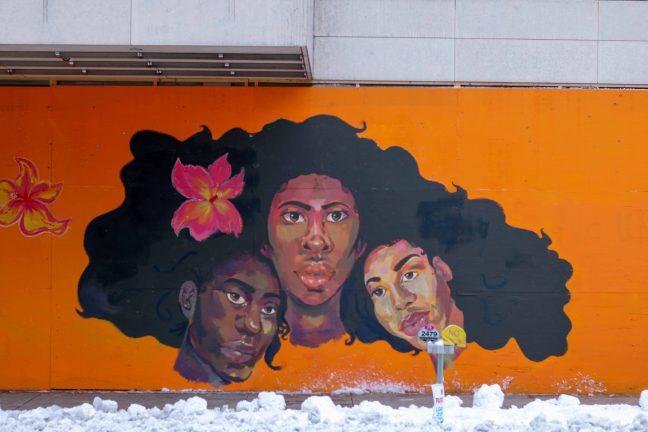Madisonian’s who identify as Black, Indigenous or a Person of Color are less likely to seek mental health help, despite increased reports of anxiety and depression due to a higher number of COVID-19 cases.
According to the Madison Public Health website, the percentage of COVID-19 cases among Black residents is three times higher than those who are white — and Hispanic cases are 2.3 times higher.
Black, Hispanic and Latino populations are 2.8 times more likely than their white counterparts to die from COVID-19 and American Indian or Alaska Native citizens are 2.6 times more likely to die, according to the CDC.
Behavioral Health Consultant at Access Community Health Centers in Madison Martha Saucedo said COVID-19 has exacerbated economic disparities, which causes stress.
“It increases anxiety, depression and grief as the BIPOC community has been the one that has been most affected by COVID. People have lost their jobs, there is a fear of not being able to social distance with family members and many have lost family members,” Saucedo said. “When your basic needs aren’t met, automatically your mental health gets affected.”
A CDC survey from June 2020 showed the percentage of respondents who reported having seriously considered suicide in the 30 days prior was significantly higher among respondents aged 18–24 years, minority racial/ethnic groups, self-reported unpaid caregivers for adults and essential workers.
According to Wisconsin Rep. Francesca Hong (D-Madison) this phenomenon is not a new one.
“Disparities in access to mental health resources have existed long before COVID-19,” Hong said.
The increased number of mental health concerns among BIPOC stem from centuries of racial trauma, or the mental and emotional injury caused by encounters with racial bias and ethnic discrimination, racism and hate crimes, according to Mental Health America.
Racial trauma includes individual racism, systemic racism, direct traumatic stressors, vicarious traumatic stressors and transmitted stressors, according to Mental Health America.
Hong said there is a stigma around asking for help within the BIPOC community.
“The cultural stigma in discussing and addressing mental health illnesses is also prevalent, particularly among communities of color,” Hong said. “Too often shame and fear surrounding mental health create additional barriers to the already limited mental health resources.”
Mental Health America lists underlying health conditions, stress, implicit bias and a higher number of BIPOC with essential jobs as contributors to the higher likelihood of COVID-19 disparities.
According to Saucedo, cultural stigma and financial disadvantages contribute to the inequities.
“In some cultures, seeking mental health services can be seen as weak or crazy, though this has gotten better with time,” Saucedo said. “In COVID times, the systemic issues in which BIPOC already experience put them at a disadvantage due to poverty and lack of cultural and linguistic services.”
According to the American Psychological Association, many white people are socialized demonstrate non-racist values by not talking about race, but this approach leaves clinicians ill-equipped to have conversations about race with BIPOC clients and less likely to engage in productive conversations surrounding traumatic experiences of racism.
According to the APA, 83% of psychologists in the U.S. in 2019 were white.
Hong calls for a collective and multifaceted approach to address policing, safety, poverty and housing in order to mitigate the growing mental health disparities prevalent within communities of color.
“In the immediate, we need aggressive investment in peer support training and workshops to address the growing provider shortage while simultaneously prioritizing recruiting and retaining social workers and mental health professionals of color,” Hong said.
American author, journalist, teacher and mental health advocate Bebe Moore Campbell made it her mission to establish June as Bebe Moore Campbell National Minority Mental Health Awareness Month, according to Mental Health America.
According to Hong, this type of awareness is a step in the right direction.
“It’s time to dig in and re-imagine what a supportive care community can look like when peer support, networking and defining what ‘reaching out’ truly means includes real talk about creating safer spaces where people can discuss and ask questions about mental health,” Hong said.
According to the Access Community Health Centers website, it is a non-profit organization with the mission of improving the health and lives of people who otherwise face financial, cultural, or language obstacles preventing access to high-quality, affordable health care.
According to Saucedo, Access’s goal is to make mental health as accessible as possible by providing bus passes for people to come to appointments, financial support on services, etc.
“We use Patient Advisory Councils to help us find the best ways to get to the BIPOC population. We continue close relationships with community partners to promote, educate and support BIPOC,” Saucedo said. “We are aware of the social determinants of health and try to fulfill the gaps as much as possible.”
The University of Wisconsin offers a variety of mental health outreach programs, including the Badger Support Network — a student organization working to de-stigmatize mental health through peer-facilitated groups and bi-weekly community events.
Mental health outreach and the use of her platform to be transparent about her own mental health struggles is important to Hong.
UPDATE: UW project to promote diversity in the sciences receives $5 million award
According to Hong, attention must continue to be given to post-pandemic racial disparities.
“I hope we continue the conversation about mental health resources, education and disparities even after we come out of the pandemic and collaboratively work to create a healthier and thriving care community,” Hong said.


